Headlines
 “We've released two commercial systems, system model H0 and H1, and I'm building and getting ready for the next model, H2,” said Sara Campbell, who worked on cutting-edge physics projects during her PhD at JILA. As the quantum computing sector swells with activity, Campbell’s job becomes more important than ever.
“We've released two commercial systems, system model H0 and H1, and I'm building and getting ready for the next model, H2,” said Sara Campbell, who worked on cutting-edge physics projects during her PhD at JILA. As the quantum computing sector swells with activity, Campbell’s job becomes more important than ever.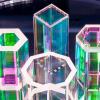 After successfully trapping and addressing 100 qubits in a large, dense 2D cold atom array, ColdQuanta's digital gate-based quantum computer is on track to massively scale qubit count beyond what is possible with other approaches.
After successfully trapping and addressing 100 qubits in a large, dense 2D cold atom array, ColdQuanta's digital gate-based quantum computer is on track to massively scale qubit count beyond what is possible with other approaches.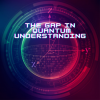 As quantum technology is quickly being developed and commercialized, misunderstandings abound in the public sphere. Writers, scientists and citizens need to be aware of how to most effectively communicate an appreciation of the true science of quantum physics.
As quantum technology is quickly being developed and commercialized, misunderstandings abound in the public sphere. Writers, scientists and citizens need to be aware of how to most effectively communicate an appreciation of the true science of quantum physics.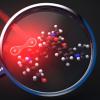 The Jimenez and Stevens labs at CU Boulder joined forces to build a state-of-the-art quantum optics laboratory with the goal of understanding why, globally, some labs have found a signal showing entangled photons being absorbed in two-photon absorption, while others haven't.
The Jimenez and Stevens labs at CU Boulder joined forces to build a state-of-the-art quantum optics laboratory with the goal of understanding why, globally, some labs have found a signal showing entangled photons being absorbed in two-photon absorption, while others haven't. For his remarkable contributions to the understanding of light-matter interactions in the quantum regime through ultra-precision control and measurements, Professor Ye (JILA; Physics; CUbit Quantum Initiative; Q-SEnSE) has been awarded the Julius Springer Prize for Applied Physics.
For his remarkable contributions to the understanding of light-matter interactions in the quantum regime through ultra-precision control and measurements, Professor Ye (JILA; Physics; CUbit Quantum Initiative; Q-SEnSE) has been awarded the Julius Springer Prize for Applied Physics.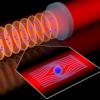 Theorists in the Rey Group and experimentalists in the Thompson laboratory at CU Boulder have proposed a way to engineer a quantum simulator of superconductivity that can measure phenomena so far inaccessible in real materials. Their findings were recently published in Physical Review Letters.
Theorists in the Rey Group and experimentalists in the Thompson laboratory at CU Boulder have proposed a way to engineer a quantum simulator of superconductivity that can measure phenomena so far inaccessible in real materials. Their findings were recently published in Physical Review Letters. “Phil has a great combination of enthusiasm and energy, scientific vision, technical competence and academic-industry relationship expertise,” said CUbit Director Jun Ye. Makotyn will work with Ye to set the strategic direction of the initiative.
“Phil has a great combination of enthusiasm and energy, scientific vision, technical competence and academic-industry relationship expertise,” said CUbit Director Jun Ye. Makotyn will work with Ye to set the strategic direction of the initiative.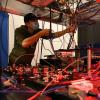 Colorado, specifically, the Denver-Boulder area, is putting its stamp on the quantum realm. The area sports decades of research expertise, a pipeline of talent and a roster of ambitious companies aiming to make waves.
Colorado, specifically, the Denver-Boulder area, is putting its stamp on the quantum realm. The area sports decades of research expertise, a pipeline of talent and a roster of ambitious companies aiming to make waves. JILA is the host of multiple centers within its campus, including the CUbit Quantum Initiative and the NSF-funded Q-SEnSE. Each center focuses on specific topics to advance knowledge, education and research on some of the biggest ideas within physics.
JILA is the host of multiple centers within its campus, including the CUbit Quantum Initiative and the NSF-funded Q-SEnSE. Each center focuses on specific topics to advance knowledge, education and research on some of the biggest ideas within physics.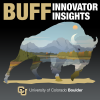 The podcast offers a behind-the-curtain look at some of the most ground-breaking innovations emanating from the CU Boulder campus. The first two episodes feature interviews with physicists and JILA Fellows Jun Ye and Margaret Murnane.
The podcast offers a behind-the-curtain look at some of the most ground-breaking innovations emanating from the CU Boulder campus. The first two episodes feature interviews with physicists and JILA Fellows Jun Ye and Margaret Murnane.

